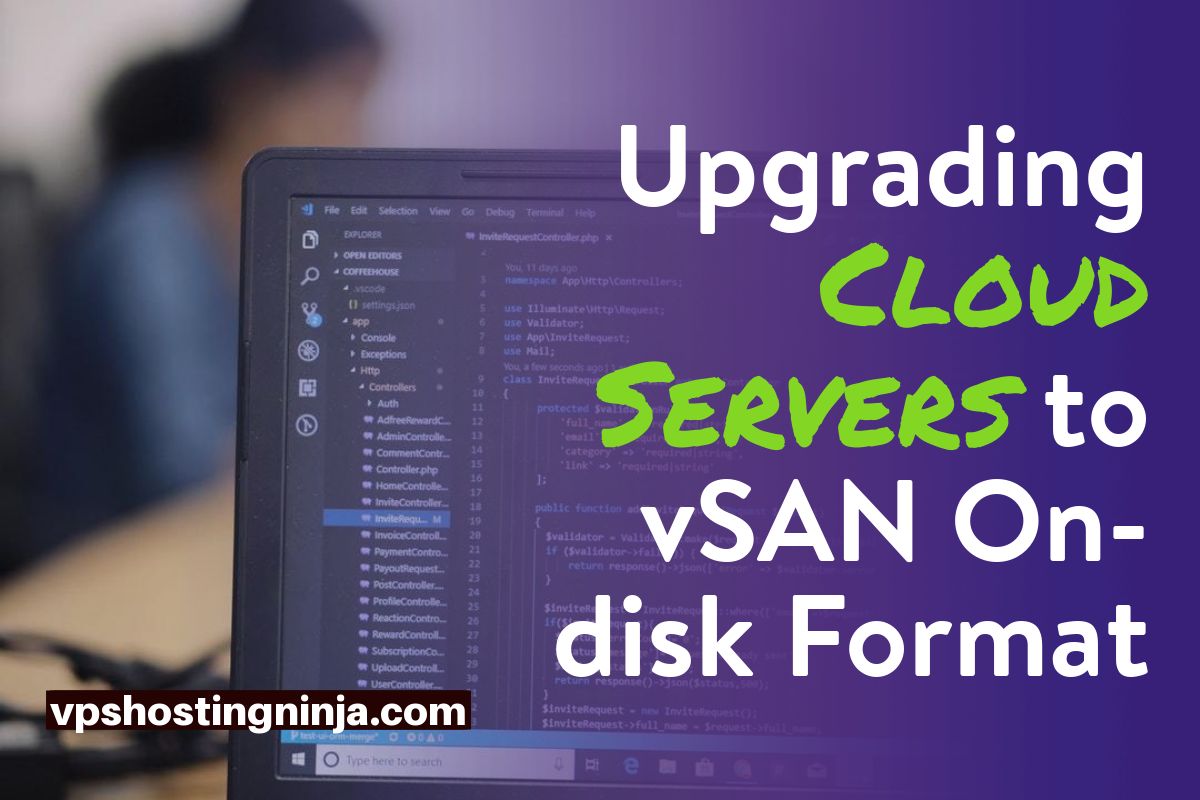Upgrading Your UK Cloud Servers to vSAN On-disk Format – How to Do It?
vCenter 6.5 was first announced in VMworld Barcelona 2016. It was jam-packed with a host of new features, tailor-made with the users in mind and to make it one of the best virtualization platforms out there. Now, if you plan to, or have already upgraded vCenter server or ESXi hosts to its latest iteration, you should also update the vSAN format to get the best results.
A majority of UK cloud servers use vSAN for better data handling and secure transmission across its nodes. Its unique properties make it extremely fault tolerant; if there is an issue in any of its partition, it almost never affects rest of the network as vSANs allow data traffic to stay isolated within a specific portion of a storage network.
The latest vSAN on-disk format brings a complete feature set of the system. Although it is entirely optional, and your vSAN cluster will work without any issue even if you use any previous disk format version, an upgrade will ensure you get the features of the latest vSphere version at your fingertips.
How to upgrade the vSAN format?
You can update the on-disk format using both vSphere web client and RVC, both are popular amongst UK cloud servers service providers. Before you start, you should know that this process might be a bit time to consume because each disk goes through the upgrade one at a time. Also, there is a checklist that you should follow –
- Check whether the software and hardware you are using are compatible and listed under the VMware compatibility list.
- Make sure you are using the latest version of vCenter Server.
- All ESXi hosts on that vSAN cluster should also be on latest version of vSphere.
- Change the vSAN disk claiming mode to manual before you start an upgrade.
- Ensure that the clusters and ESXi hosts are not in maintenance mode. In maintenance mode, an upgrade may not complete as each cluster capacity gets significantly reduced.
- Also, the vSAN Datastore should have adequate space to upgrade the on-disk format, and there should be no component rebuilding tasks running in the background while you start this process.
- Run the Pre-Check Upgrade task before starting this process. It will run most of the validations for you. Continue with the upgrade on your UK cloud servers only if Pre-Check Upgrade returns a green status.
Upgrade using vSphere Web Client
If all the pre-upgrade checks come green, you can start upgrading vSAN on-disk format. Here is how you can do it with vSphere Web Client.
Log-in to vCenter, and navigate to Hosts & Clusters from the main page. There, you will find vSAN in the left-hand side navigation bar. In its Configure tab, select General, and click on Upgrade on the right-hand sidebar. It will automatically start the process, and you will be able to monitor the process from the web page itself.
Upgrade using RVC –
RVC, or Ruby vSphere Console is one of the most popular UK cloud servers user interfaces for virtual centre and VMware ESXi. It is among the most potent tools to manage and troubleshoot vSAN environments.
To upgrade it using RVC, first, you have to log in to vCenter Server application with your root credentials. From vCenter Server appliance, transfer to RVC and run the following command to initiate vSAN on-disk format upgrade:
vsan.v2_ondisk_upgrade ~/computers/cluster-name
Once the upgrade is complete, you can check the Disk Format version from general settings of vSAN. You can also validate vSAN objects versions with the following command –
vsan.obj_status_report ~/computers/cluster-name
And that’s about it!
Let’s hope that the upgrade procedure will help you follow through the entire thing without any issue. Remember, compliance status and redundancies of your UK VPS will be non-compliant during the upgrade. It will revert back to normal once you are done with this process.

